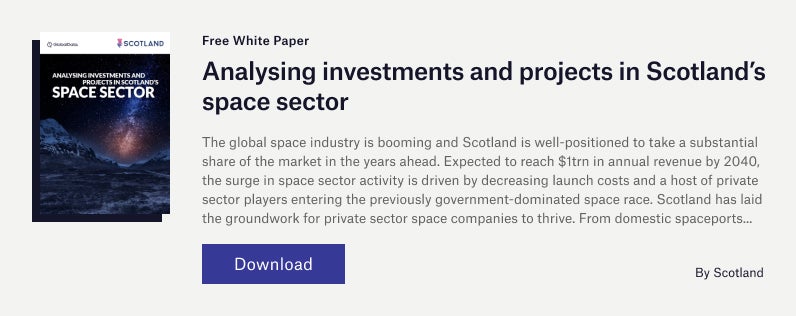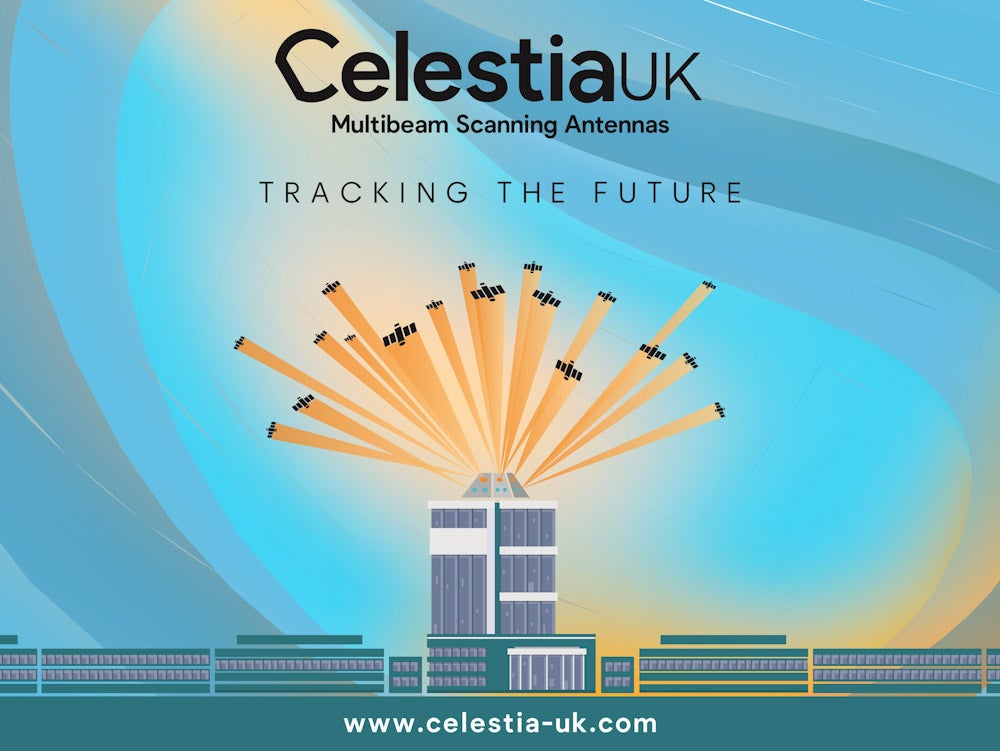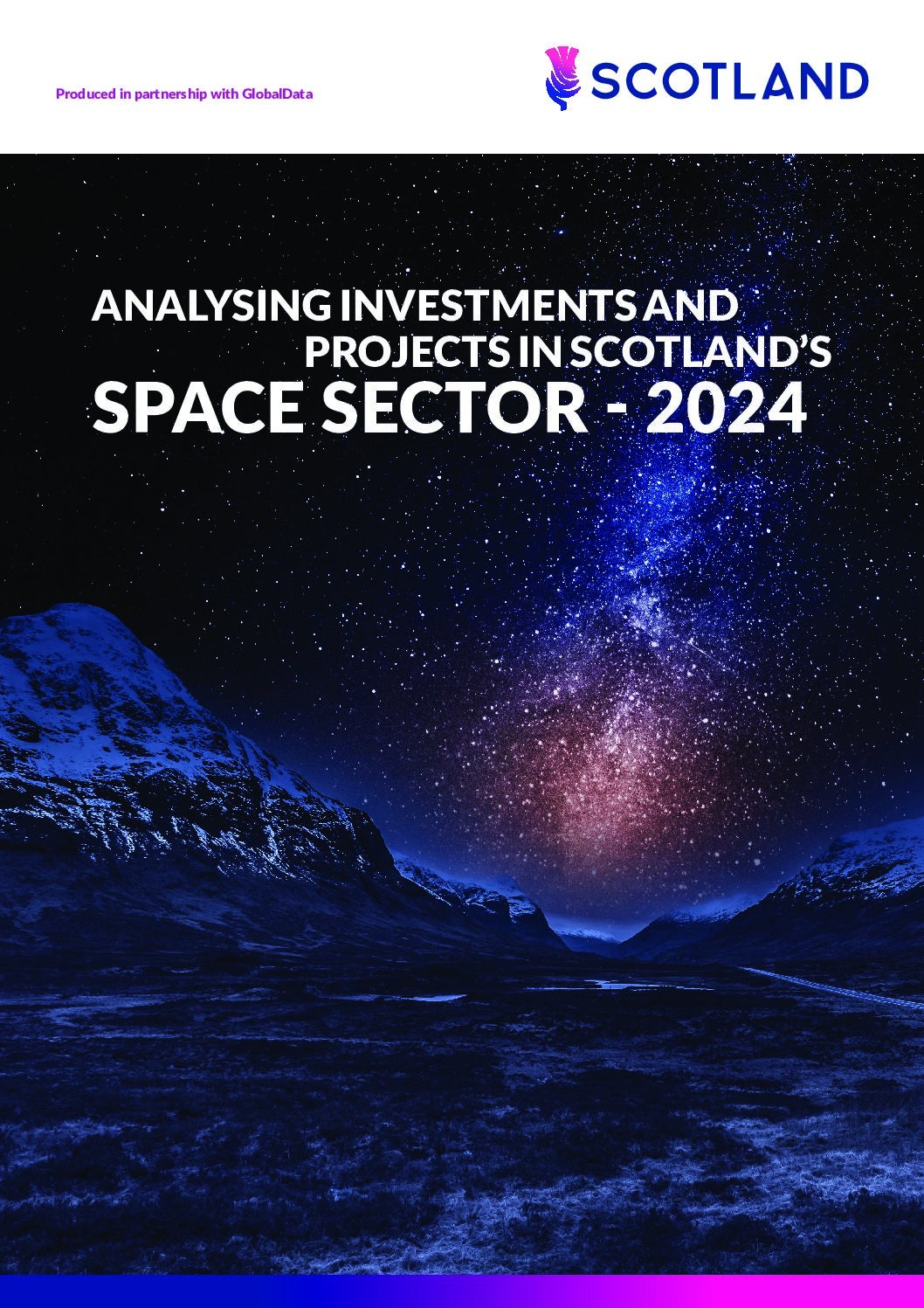
Scotland’s space sector is growing faster than anywhere in Europe and now hosts more than 130 space companies, many of these international businesses.
The Scottish space sector is predicted to reach a value of £4bn by 2030, aided by the UK Space Agency working with the Scottish Government to support vertical and horizontal launch spaceports across Scotland.

The current trend towards satellite constellations, where hundreds and sometimes thousands of small, low-cost satellites are launched into low-Earth orbit to deliver broadband services across the planet, brings with it the challenge of communicating the exponentially growing volume of data to and from the Earth.
Essential to the development of these constellation satellite systems is ground-based infrastructure and data processing. This is where Celestia UK comes in. Part of the Celestia Technologies Group, a pan-European network of SMEs specialising in the development of high technology products for satellite systems, Celestia UK has award-winning expertise in antenna, radio frequency and digital signal processing technologies for satellite communications. The business has two sites in Edinburgh at the Heriot-Watt University Research Park and an additional site in Oxfordshire at Harwell Science and Information Campus.
“We produce what is called electronic steerable antennas,” says Malachy Devlin, CEO at Celestia UK. “Instead of a traditional mechanical dish that people recognise as a way to communicate with satellites, we have a relatively small unit that adjusts the direction of the communication beam electronically, with no moving parts.
“Whereas a single receiving dish can only track one satellite at a time and is slow for repositioning to new satellites, our technology ‘eScan’ can track dozens of satellites at once. What we do is very agile. Our technology can be pointed at one part of the sky, then follow a satellite, and instantaneously, we can be back at the start or we can pick up any satellite within view,” adds Devlin.
Technologies to reduce the cost of satellites
The increased number of satellite constellations has been driven by the use of low-Earth and medium-Earth orbits to bring new benefits and lower barriers for commercial viability. Since these satellites are closer to the Earth, signals have less distance to travel. “The lower latency is really important,” notes Devlin.
“For Starlink or OneWeb, for example, that is one of their key messages about reducing time, so it gets closer to the broadband you would have at home. Another key driver is the reduction in costs to put a satellite in low-Earth orbit. Being closer to Earth reduces the launch costs and radiation is benign compared to satellites in geo-stationary orbit, allowing the use of commercial parts rather than the more expensive space-grade parts.”
“This has ignited the ‘new space’ industry where companies are creating low-cost satellites such as CubeSats, for example. This allows organisations to launch multiple satellites to create a constellation, reducing risks and eliminating single points of failure. So if one satellite out of 100 fails in a constellation, there is enough resilience to allow the organisation to continue their mission.”
Although electronic scanning antennas have existed for a number of years, Celestia UK uses frequencies much higher than is standard. “It is what is called the Ka-band,” explains Devlin. “It gives you much higher bandwidth to transfer data to and from satellites, and we improve this further through our multi-beam capability where we can track tens of satellites simultaneously in a unit the size of a four-person tent.”
Devlin points out the advantages that such a small unit can have. Traditionally, you need fields full of satellite dishes, somewhere remote, that you have to run power and fibre connections back to your data centre from, which in turn adds further latency to the signal. “What we can do is take all that, put it into a ‘box’ that can go on the roof of your data centre and pipe the data straight into the centre,” Devlin explains. “Straightaway, that reduces costs, latency and security risks.”

Investing in the space sector in Scotland
When it came to choosing Scotland as its research and development (R&D) base, Devlin says the decision was not only based on economic grounds, but also on the best place for Celestia UK to grow and access talent with the right skills.
“We are pushing at the technical limits and being able to tie in with Heriot-Watt University was important as well,” says Devlin. “The university hosts the largest antenna engineering group of its kind in Scotland and one of the largest in the UK. Being close to the university and having access to its cutting-edge facilities, technical expertise plus skilled, highly trained graduates has helped us grow. We now have two premises in its research park, one where we have got our design and operational capability and the other where we do our assembly and testing of the systems.
“It is that access to talent and also Scottish Enterprise and Scottish Development International – the way they engage and how they engage – that is a very good experience. They try to understand what we are working on and they provide financial support for R&D as well.”
Celestia UK received a £2.5m R&D award from Scottish Enterprise in 2020, creating over 18 new jobs. Devlin says that the support the business received is ongoing. “What is really good is they are still there and we have regular interaction,” adds Devlin. “They want to understand where you are going and they want to see where they can help you grow.”
Growing a space business in Scotland
For Celestia UK, Scotland is an important location for future growth. “We have been doing a lot of development and validation of the technology,” says Devlin. “Now, we are transitioning to production and looking at expanding our manufacturing capability.”
The business doesn’t stand still and is always looking at the next generation of satellite communication, continues Devlin. “How do we maximise the bandwidth? So, there are increasing frequencies to get more bandwidth. When you talk about communications, as we get more users on these networks, how do we push it harder? We will be looking at that.
“Also, we are working on projects to use our satellite communications technology for aircraft. Not just on top of a data centre but in a situation where you have got moving vehicles such as aircraft. Currently, it is typically a small mechanical dish that sits in the plane, but we can do that electronically and in a unit that has a lower profile, which reduces air resistance and therefore cuts costs for the airline,” points out Devlin.
Scotland holds one more key advantage for Celestia UK, says Devlin, which is being part of a ‘space community’.
“People can learn from each other – whether that is regulation, legal, supply chain or talent acquisition,” adds Devlin. “Scotland is big enough to get a lot done, but still small enough to feel like a community.”



